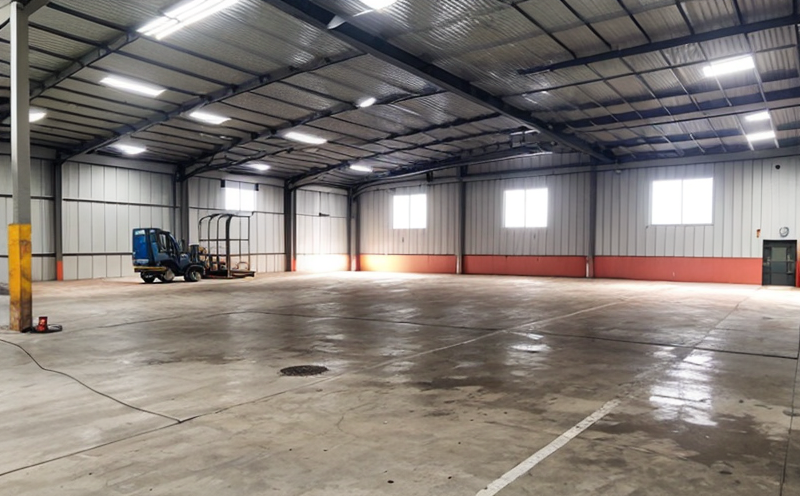Ventilation system in warehouse inspection
The inspection of ventilation systems within warehouses is a critical service that ensures optimal air quality and safety standards are met. Ventilation systems play an essential role in maintaining the health of workers, preserving inventory integrity, and preventing damage to stored goods due to excessive moisture or temperature fluctuations.
Warehouses with poor ventilation can lead to mold growth, odors, and even structural issues due to condensation buildup. Properly designed and maintained ventilation systems help regulate air flow, control humidity levels, and ensure the safety of personnel by reducing the risk of respiratory ailments associated with stagnant air environments.
The inspection process typically involves a comprehensive review of the design, installation, operation, and maintenance practices related to the ventilation system. This includes checking for proper ductwork alignment, filter efficiency, fan performance, and overall airflow distribution throughout the facility. Compliance officers and quality managers often rely on this service to ensure their facilities meet regulatory requirements such as ASHRAE standards.
For R&D engineers involved in new warehouse design projects, inspections provide valuable insights into best practices for integrating ventilation systems with other building components like fire protection and lighting. Procurement teams benefit from this service by ensuring suppliers deliver equipment that adheres to industry norms and enhances operational efficiency.
Detailed documentation is a crucial aspect of any inspection report. It should include measurements taken during the assessment, observations regarding current conditions compared against benchmarks set forth by relevant standards bodies (e.g., ASHRAE), recommendations for improvements, and timelines for implementing changes where necessary.
Industry Applications
- Manufacturing: Ensures production areas remain free from contaminants while adhering to strict environmental controls required by OSHA regulations.
- Retail: Maintains product quality and extends shelf life through controlled temperature and humidity levels within storage facilities.
- Distribution Centers: Enhances worker safety and productivity by providing fresh air circulation necessary for maintaining alertness and comfort during long shifts.
- Logistics: Prevents cargo damage caused by excessive moisture or heat, ensuring timely delivery of goods without compromising integrity.
Customer Impact and Satisfaction
The impact on customers can be significant when a warehouse fails to meet ventilation standards. Poor air quality has been linked to reduced employee morale, increased absenteeism rates, higher insurance premiums, and potential lawsuits if health issues arise from unsafe working conditions.
By investing in regular inspections of their ventilation systems, businesses demonstrate commitment to both worker well-being and regulatory compliance. This not only enhances customer confidence but also supports long-term business sustainability by minimizing operational disruptions due to unforeseen failures or non-compliance.
International Acceptance and Recognition
- The International Organization for Standardization (ISO) has established guidelines in ISO 14001: Environmental Management Systems which indirectly reference the importance of proper ventilation practices.
- American Society of Heating, Refrigerating & Air-Conditioning Engineers (ASHRAE) provides detailed recommendations on indoor air quality and ventilation rates specifically tailored for various types of buildings including warehouses.
- European Committee for Standardization (CEN) has contributed through EN 13782: Ventilation systems in buildings - Determination of the outdoor air requirements, emphasizing energy efficiency considerations alongside safety aspects.
These standards are widely adopted across Europe and beyond, reflecting their credibility and relevance within the global construction industry. Adhering to these guidelines ensures that inspections conducted meet recognized benchmarks and can be easily integrated into international projects involving multiple jurisdictions.





